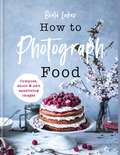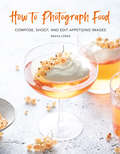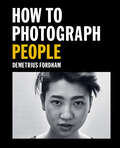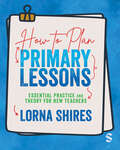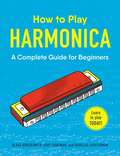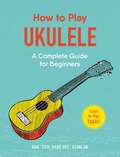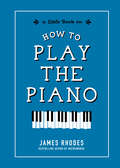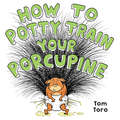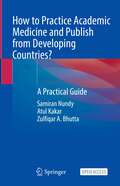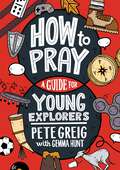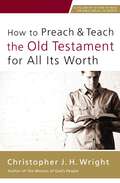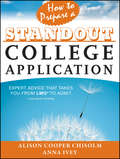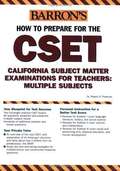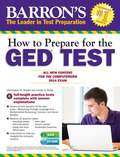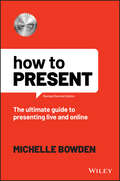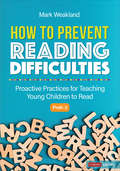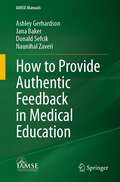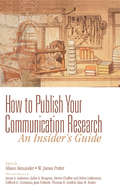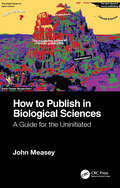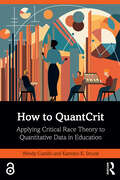- Table View
- List View
How to Photograph Food
by Beata LubasFood photography is a rapidly-growing genre, and whether you're a food blogger looking to take your presentation to the next level, or a professional photographer keen to expand into this lucrative market, this book has everything you need to make it all a piece of cake.Using the techniques she has developed through years of professional success, Beata Lubas will teach you how to anticipate your clients' needs, articulate your own style, and skillfully manufacture sumptuous shots that leap from the page. Learn how to tell food stories using light, colour and shape to evoke atmosphere. Discover methods for shaping natural light to produce magical images in any environment. Combine styling tricks and camera skills to create sensational compositions.With clear, concise and comprehensive instruction to suite every skill level, this book takes you through all the stages involved in creating incredible food photography. So much more than just a guide to photographing food, this is a must-read manual for every photographer working with natural light.
How to Photograph Food: Compose, Shoot, and Edit Appetizing Images
by Beata LubasFor amateurs and pros looking to add to their portfolios, How to Photograph Food makes food photography a piece of cake!How to Photograph Food is the gorgeous, informative photography book you didn't know you needed. For budding photographers and social media personalities, the perfect image has never been easier to capture, and How to Photograph Foodputs it all within reach. Chapters include: GearLightingFrame and BalanceFood StylingPhoto EditingThinking like a ProYou'll learn the essential equipment, how to keep food looking good on a shoot, how to work with props, managing lighting, and much more, all from a skilled photographer and teacher. With only a digital camera and a little practice, you'll be able to turn out images with great contrast, balance, and appeal that look as good as they taste.
How to Photograph People: Learn to take incredible portraits & more
by Demetrius FordhamWhatever type of device you use to take pictures - whether a phone or a pro-spec digital camera - the most compelling subject is always other human beings. Portraiture is one of the most popular genres in photography, but it can also be one of the most daunting to undertake, especially when you're just starting out.In this comprehensive guide, Demetrius Fordham shares his real-life experiences from years of portrait sessions, using these examples to impart the tips, tricks and knowledge that will let you take your own amazing images of people. - Learn from real-life portraiture examples, shot by a top pro - Gain the skills needed to create a rapport with your subject - Get all the tips and tricks for perfect posing - Master every type of portraiture from casual-looking group shots to formal studio sessions - Discover techniques that will let you get amazing pictures of people in any situation
How to Photograph People: Learn to take incredible portraits & more
by Demetrius FordhamWhatever type of device you use to take pictures - whether a phone or a pro-spec digital camera - the most compelling subject is always other human beings. Portraiture is one of the most popular genres in photography, but it can also be one of the most daunting to undertake, especially when you're just starting out.In this comprehensive guide, Demetrius Fordham shares his real-life experiences from years of portrait sessions, using these examples to impart the tips, tricks and knowledge that will let you take your own amazing images of people. - Learn from real-life portraiture examples, shot by a top pro - Gain the skills needed to create a rapport with your subject - Get all the tips and tricks for perfect posing - Master every type of portraiture from casual-looking group shots to formal studio sessions - Discover techniques that will let you get amazing pictures of people in any situation
How to Plan Primary Lessons: Essential Practice and Theory for New Teachers
by Lorna ShiresLearn how to think like an expert primary teacher and how to plan great lessons. This book explores the knowledge, skills and evidence base that expert teachers use to plan lessons in primary schools. It combines practical principles with robust ideas from theory to offer a flexible approach to fit any school′s preferred lesson planning format. Key features: Chapters are supported by examples from across the curriculum Deep insight into how expert teachers construct and teach their own lessons Carefully aligned to the National Curriculum in England, the initial teacher education Core Content Framework (CCF), the Early Career Framework (ECF) and the Teachers′ Standards. This is essential reading for student teachers on primary initial teacher education courses, via any route (PGCE, BA w/QTS, School Direct, SCITT and Teach First).
How to Plan Primary Lessons: Essential Practice and Theory for New Teachers
by Lorna ShiresLearn how to think like an expert primary teacher and how to plan great lessons. This book explores the knowledge, skills and evidence base that expert teachers use to plan lessons in primary schools. It combines practical principles with robust ideas from theory to offer a flexible approach to fit any school′s preferred lesson planning format. Key features: Chapters are supported by examples from across the curriculum Deep insight into how expert teachers construct and teach their own lessons Carefully aligned to the National Curriculum in England, the initial teacher education Core Content Framework (CCF), the Early Career Framework (ECF) and the Teachers′ Standards. This is essential reading for student teachers on primary initial teacher education courses, via any route (PGCE, BA w/QTS, School Direct, SCITT and Teach First).
How to Play Harmonica: A Complete Guide for Beginners (How to Play)
by Blake Brocksmith Gary Dorfman Douglas LichtermanThis easy-to-understand beginner’s guide provides an introduction to playing the harmonica and includes helpful information about basic techniques, tools, and music knowledge.Learn to play the harmonica with this step-by-step guide perfect for beginners. With just this book and your harmonica in hand, you’ll learn basic music skills, discover how and why your harmonica works, play some simple tunes, and start to improvise your own music.
How to Play Ukulele: A Complete Guide for Beginners (How to Play)
by Dan ScanlanLearn to play the ukulele with this beginner’s guide that features information about basic techniques, tools, and music knowledge.What do George Clooney, Zooey Deschanel, Ryan Gosling and James Franco all have in common? Answer: they all play the ukulele and now, with this easy step-by-step guide, you can too! With just this book and your ukulele in hand, you’ll learn basic music skills, how to care for your instrument, and how to play some simple tunes. Whether you’re looking to impress your friends with spontaneous singalongs, or just want to strum solo, How to Play Ukulele is the perfect entryway to the wonderful world of ukulele.
How to Play the Piano
by James RhodesNow you can master Bach’s most beautiful prelude—even if you’ve never sat down at a piano before! Do you have a piano (or keyboard) and forty-five spare minutes every day? Then spend the next six weeks with acclaimed concert pianist James Rhodes. By the end, you’ll be able to perform Bach’s Prelude No. 1 in C major—no prior musical experience required! Rhodes reveals How to Play the Piano step by step—how to read the treble and bass clefs as well as sharp and flat notes, and then how to practice—before teaching the Prelude in easy, bite-size segments. His method is free of tedious drills, and filled with inspiration: “If listening to music is soothing for the soul, then playing music is achieving enlightenment.” Before you know it, not only will you have learned how to play one of Bach’s most beloved masterpieces—you also will have unleashed your creativity, exercising your mind (and fingers) and accomplishing something you never thought possible. Bravo!
How to Potty Train Your Porcupine
by Tom ToroThis laugh-out-loud picture book is a hilarious take on potty training by a talented New Yorker cartoonist -- perfect for fans of If You Give a Mouse a Cookie and How to Babysit a Grandma. Two children bring home a pet porcupine, but they can only keep her if she's house-trained! After a whirlwind of increasingly zany approaches, the kids learn that sometimes the best way to solve a problem is to ask nicely. With Tom's wit and dynamic artwork, this delightful story about learning to pee will bring joy and heart to young readers.
How to Practice Academic Medicine and Publish from Developing Countries?: A Practical Guide
by Samiran Nundy Atul Kakar Zulfiqar A. BhuttaThis is an open access book. The book provides an overview of the state of research in developing countries – Africa, Latin America, and Asia (especially India) and why research and publications are important in these regions. It addresses budding but struggling academics in low and middle-income countries. It is written mainly by senior colleagues who have experienced and recognized the challenges with design, documentation, and publication of health research in the developing world. The book includes short chapters providing insight into planning research at the undergraduate or postgraduate level, issues related to research ethics, and conduct of clinical trials. It also serves as a guide towards establishing a research question and research methodology. It covers important concepts such as writing a paper, the submission process, dealing with rejection and revisions, and covers additional topics such as planning lectures and presentations. The book will be useful for graduates, postgraduates, teachers as well as physicians and practitioners all over the developing world who are interested in academic medicine and wish to do medical research.
How to Pray: A Guide for Young Explorers
by Pete Greig Gemma HuntInspired by the hugely successful How to Pray. Pete Greig takes his simple guide to prayer and gives children the same tools and encouragement. How to Pray: A Guide for Young Explorers is packed full of real life stories, teaching, fun facts, activities and inspiration to get creative and confident in prayer. With insights and ideas from CBBC presenter and author Gemma Hunt, children's workers and children from around the country, this is the go-to guide for prayer for a new generation.
How to Preach and Teach the Old Testament for All Its Worth
by Christopher J. WrightMany preachers ignore preaching from the Old Testament because they feel it is outdated in light of the New Testament and difficult to expound. On the other hand, some preachers will preach from the Old Testament frequently but fail to handle it correctly, turning it into moralistic rules or symbolic lessons for our spiritual life. In How to Preach and Teach the Old Testament for All Its Worth, Christopher J. H. Wright proclaims that preachers must not ignore the Old Testament. It is the Word of God! The Old Testament lays the foundation for our faith and it was the Bible that Jesus read and used. Looking first at why we should preach from the Old Testament, the author moves on to show the reader how they can preach from it. Covering the History, Law, Prophets, Psalms, and Wisdom Literature, interspersed with practical checklists, exercises, and sermons, Wright provides an essential guide on how to handle the Old Testament responsibly.
How to Prepare a Standout College Application: Expert Advice that Takes You from LMO* (*Like Many Others) to Admit
by Anna Ivey Alison Cooper ChisolmDemystifying the process of completing a college application Written by two former admissions officers at top universities and current admissions coaches, this book is a must-have for preparing a winning college application. The authors reveal the mystery behind what college admissions officers are looking for and show applicants how to leverage their credentials, stand out in the over-crowded applicants' pool, and make a genuine, memorable impression. This is the book that will help the college-bound get off the "like many others" pile and onto the acceptance list. Includes instructions and examples for every component of the college application, from writing the essay to answering questions like "Why do you want to go to College X?" Shows how to avoid underestimating the importance of critical features on any application Includes the latest information on the Common Application 4.0 and corrects outdated, holdover advice still stressed in many other books This book is filled with step-by-step advice that students and parents can use immediately and will refer to again and again.
How to Prepare for the CSET Multiple Subjects: California Subject Matter Examinations for Teachers
by Robert D. PostmanChoose Barron's Method for Test Success on the CSET. Read and understand the author's overview of the CSET exam. Devise your personal study plan for success for each subtest. Use this book's subject reviews and additional practice questions to improve your skills in all test topics. Take the book's practice tests and score your results. Review the answers and explanations for all test questions. It's Your Path To a Higher CSET Test Score.
How to Prepare for the GED Test
by Christopher Sharpe Joseph ReddyThe 2014 GED exam has been revised extensively to reflect the world we live in today. The most noticeable change is that the test is now computer based--a transition that requires test-takers to have strong typing and computer skills. <P><P> The new exam covers additional topics in the Math and Science sections and includes "blended" subject matter within the sections, meaning test-takers will see science questions that require math to produce a numerical answer or social studies questions that require essay-writing skills and so forth. <P><P>Test-takers will also find all question types used on the new computer format. With such comprehensive changes in store for test-takers, it is fitting for Barron's to offer a book based on the 2014 exam. The new "How to Prepare for the GED Test" offers test-takers a guided approach to taking and passing the exam by building on the skills they already have. <P><P>Test-takers will benefit from the book's extensive subject reviews that cover all four of the new test sections: Social Studies Science Reasoning through Language Arts Mathematical Reasoning The book also includes diagnostic tests and two full-length practice exams with all questions answered and explained.
How to Present: The Ultimate Guide to Presenting Live and Online
by Michelle BowdenLearn the secrets of successful speaking, communicating and presenting Do you get nervous when presenting at work? Do you want to showcase your knowledge, influence people and accelerate your career? How to Present reveals the winning formulas that ensure you are a confident, clear and influential presenter every time. Presentation skills expert Michelle Bowden shares her internationally proven system for exceptional presenting, starting with analysis (plan what you would like to achieve), then design (put your presentation together) and delivery (communicate your message for results). This second edition is fully updated with all new strategies for presenting in online and hybrid sessions. Presenting online can be effective and engaging—you just need to know what to do, and then do it! How to Present will help you: maximise your impact in meetings, conferences and conversations manage your nerves so you feel calm and confident engage your audience and master the art of persuasion structure your message cleverly and with deliver with authority command attention and achieve your goals Whether you're speaking to one person or thousands, live or online, this is the essential guide to becoming an outstanding presenter who is memorable for all the right reasons!
How to Prevent Reading Difficulties, Grades PreK-3: Proactive Practices for Teaching Young Children to Read (Corwin Literacy)
by Mark WeaklandThe science of reading meets the art of teaching readers Do you have the knowledge and instructional ability to effectively teach foundational skills and to support students who show signs of reading difficulties? It is a tall order — and one that challenges many new and veteran teachers. How to Prevent Reading Difficulties, Grades PreK-3 builds on decades of evidence and years of experience to help teachers understand how the brain learns to read and how to apply that understanding to Tier 1 instruction. The book includes: step-by-step descriptions of techniques for effectively teaching phonological awareness, spelling, phonics, vocabulary, and comprehension specific Tier 1 activities, routines, and frameworks that build and strengthen word recognition and language comprehension links to video demonstrations and online resources clear, practical explanations of the science of reading, including the Eternal Triangle and the Simple View of Reading, to help teachers understand the fundamentals of the reading process, recognize how difficulties arise – and understand how to address them A book study guide is available on the Free Resources tab to provides group guidance on how to effectively teach foundational skills and to support students who show signs of reading difficulties. Author Mark Weakland brings new energy to teaching high-priority foundational skills. By blending the science of reading with the best instructional practices that lead to authentic reading—the ultimate goal of balanced literacy—teachers can prevent many reading difficulties in K-3 learners.
How to Prevent Reading Difficulties, Grades PreK-3: Proactive Practices for Teaching Young Children to Read (Corwin Literacy)
by Mark WeaklandThe science of reading meets the art of teaching readers Do you have the knowledge and instructional ability to effectively teach foundational skills and to support students who show signs of reading difficulties? It is a tall order — and one that challenges many new and veteran teachers. How to Prevent Reading Difficulties, Grades PreK-3 builds on decades of evidence and years of experience to help teachers understand how the brain learns to read and how to apply that understanding to Tier 1 instruction. The book includes: step-by-step descriptions of techniques for effectively teaching phonological awareness, spelling, phonics, vocabulary, and comprehension specific Tier 1 activities, routines, and frameworks that build and strengthen word recognition and language comprehension links to video demonstrations and online resources clear, practical explanations of the science of reading, including the Eternal Triangle and the Simple View of Reading, to help teachers understand the fundamentals of the reading process, recognize how difficulties arise – and understand how to address them A book study guide is available on the Free Resources tab to provides group guidance on how to effectively teach foundational skills and to support students who show signs of reading difficulties. Author Mark Weakland brings new energy to teaching high-priority foundational skills. By blending the science of reading with the best instructional practices that lead to authentic reading—the ultimate goal of balanced literacy—teachers can prevent many reading difficulties in K-3 learners.
How to Prevent Special Education Litigation: Eight Legal Lesson Plans
by Kevin P. Brady Regina Umpstead Janet R. Decker David Schimmel and Matthew MilitelloIt is essential that today’s educators and school leaders are more informed about the legal rights and entitlements of students with disabilities. This resource provides eight easy-to-implement lesson plans on special education law that require no legal knowledge and can be facilitated by school principals, special education directors, teachers, or university instructors. In short one-hour sessions, participants learn by engaging in practical activities instead of only passively reading about the law. All of the lessons utilize actual situations that have led to expensive litigation and each includes the following sections: Introduction for Facilitators; Materials Needed; Hook; Background, Purpose, and Objectives of the Lesson; Activity; Questions for Conversation; Test Your Knowledge; and Additional Resources. This one-of-a-kind book will help schools and districts reduce the time and energy devoted to dealing with violations of the law, resolving parental complaints, correcting errors by school employees, and more. Book Features: A focus on important special education legal issues occurring in schools today. Field-tested lesson plans that can be adopted by schools nationwide because they are based on federal law. Everything needed to teach the lessons, including materials, scripts, interactive activities, and discussion questions. Measurable objectives and assessments to ensure the participants have learned the intended content of the lesson.
How to Provide Authentic Feedback in Medical Education (IAMSE Manuals)
by Ashley Gerhardson Jana Baker Donald Sefcik Naunihal ZaveriThis manual provides a quick reference guide to assist educators in providing authentic feedback, how to address feedback in pre-clinical and clinical situations, and the benefits of two-way feedback in improving instruction. This manual is a collective effort between medical educators designed to ensure authentic feedback is structured for both the learner and the learning environment.This manual enables medical educators to move from theory to practical application in both the preclinical and clinical settings. Through theory, the practical application of authentic feedback becomes a concrete application rather than a profound concept. Educators gain knowledge regarding how theoretical concepts become a reality leading to student success and self-directed learning. The manual guides the educator through the various modalities in which feedback is required to drive student success, such as formative practice, learning environments, small group learning, multiple-choice assessments, and clinical settings. Finally, the manual ends with two-way communication and describes the steps medical educators can take to become reflective professionals. Supported by experienced and evidence-based recommendations, medical educators, administrators, and institutions are presented with checklists, strategies, and best practices for providing authentic feedback.
How to Publish Your Communication Research: An Insider’s Guide
by Dr W. James Potter Alison F. AlexanderWell-known journal editors and Communication scholars Alison Alexander and W. James Potter provide an insider's guide to getting published in scholarly communication journals. Alexander and Potter begin with a review of the manuscript submission process followed by coverage of writing traps that should be avoided. Additional chapters, written by eight other distinguished journal editors, tell prospective authors what editors and reviewers look for when deciding which articles should be published and which should not.
How to Publish in Biological Sciences: A Guide for the Uninitiated
by John MeaseyThis book is a guide specifically for Early Career Researchers on how to publish in the Biological Sciences, whether that be your first manuscript or if you’re already experienced – there’s something for everyone.Following on from How to Write a PhD in Biological Sciences: A Guide for the Uninitiated, it will guide you through taking your manuscript to publication in peer-reviewed journals and disseminating your research more broadly. It talks you through the peer-review process, including how to respond to reviewers’ comments, the meaning and importance of Impact Factors and how to get citations. It also explores the challenges in the academic community around Open Access and other debates, including transparency, overlay journals, paywalls, publication bias, predatory journals and the dangers of bullying.Whether you are a student just completing your studies, or a supervisor struggling with rejections, this book will provide the insider information you need to get ahead.
How to Put On a Class Play (Rigby Leveled Library, Level K #47)
by Sally Cowan Rob ManciniNIMAC-sourced textbook
How to QuantCrit: Applying Critical Race Theory to Quantitative Data in Education
by Kamden K. Strunk Wendy CastilloHow to QuantCrit equips researchers and users of quantitative data with practices to alter how they collect and analyze quantitative data. Using Quantitative Critical Race Theory (QuantCrit) as a framework, this book develops the foundation for an iterative praxis to explore a range of questions that prompt practitioners and stakeholders to be engaged critics in working towards a more just and equitable society.The book begins with an overview of QuantCrit and its five tenets: (1) the centrality of racism; (2) numbers are not neutral; (3) categories are neither ‘natural’ nor given; (4) the importance voice and insight (data cannot speak for themselves); and (5) a social justice/equity orientation. Each subsequent chapter begins with a more detailed explanation and exploration of the tenet. Then, the chapters move into actionable steps that researchers and data users can take to implement QuantCrit into applied practice. Finally, the book closes with thoughts on working to use quantitative data for racial justice.This book is intended for researchers, data users, and graduate students in education and education-related disciplines. It offers insights and suggested actions that range from working with existing data sets in more racially just ways to more radically reimagining the entire educational research process. As such, the book offers ideas and information that can be useful for anyone working with quantitative educational data.
